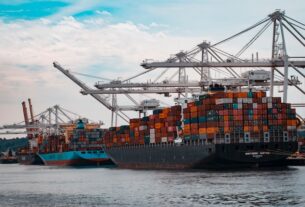A research project by the Rail Safety and Standards Board means freight train operators in Great Britain can safely haul more goods wagons per train than current practices allow, improving their environmental impact and financial efficiency.

The research has enabled existing couplers, which connect freight wagons, to safely connect more load. The evidence means a 34.5 tonne coupler rating can increase 16% to 40 tonne, and some 56 tonne rated couplers increasing 13% to a new 63 tonne rating. Crucially the uprated values can be applied to wagons in use today without the need to upgrade or undertake a detailed engineering assessment.
As a result of the research, more than 12,000 rail freight wagons, over 50% of Britain’s fleet, will received an increase in traction rating (the amount of weight it is able to safely haul).
RSSB’s real-world case studies found that increasing coupler strength ratings will provide huge environmental and financial benefits.

On a typical Anglo-Scottish journey, over two tonnes of carbon dioxide emissions can be saved, as well as considerable amounts of nitrogen oxides and particulate emissions. Significant financial efficiencies are also delivered due to the train length increase.
Case studies
A 50-mile journey (each way) with 24 wagons. This increased to 27 wagons and provided environmental savings of 0.25 tonne CO2 (Carbon Dioxide). The projected annual financial savings were £291k.
A 235-mile journey (each way) with 14 wagons. This increased to 16 wagons and provided environmental savings of 1.4 tonne CO2. The projected annual financial savings were £245k.
A 235-mile journey (each way) with 19 wagons. This increased to 23 wagons and provided environmental savings of 2.1 tonne CO2. The projected annual financial savings were £364k.
The rail industry is now implementing the improved freight coupler load ratings and identifying routes suitable for longer freight services.
RSSB’s Lead Research Analyst, Aaron Barrett said:
“It’s good to see the results of our research directly helping freight train operators. By enabling longer trains, more goods and materials can be hauled per journey. This will have a hugely positive impact on emissions and financial efficiency.
“This research project is the first in a series, funded by the Department of Transport, designed to help the rail freight sector in Great Britain. Our freight research programme is currently focusing on the safe operation of rail freight, raising the average speed of services, enabling the operation of longer trains and reducing emissions.”
Rail Minister, Huw Merriman said:
“This research is hugely promising. It’s great to see how we’re continuing to improve our freight network, so even more goods and materials can be moved with every journey, strengthening the UK supply chain.
“Government investment into new ideas and innovations is vital as we continue to strengthen the UK supply chain and strive towards greener freight and net zero by 2050.”



